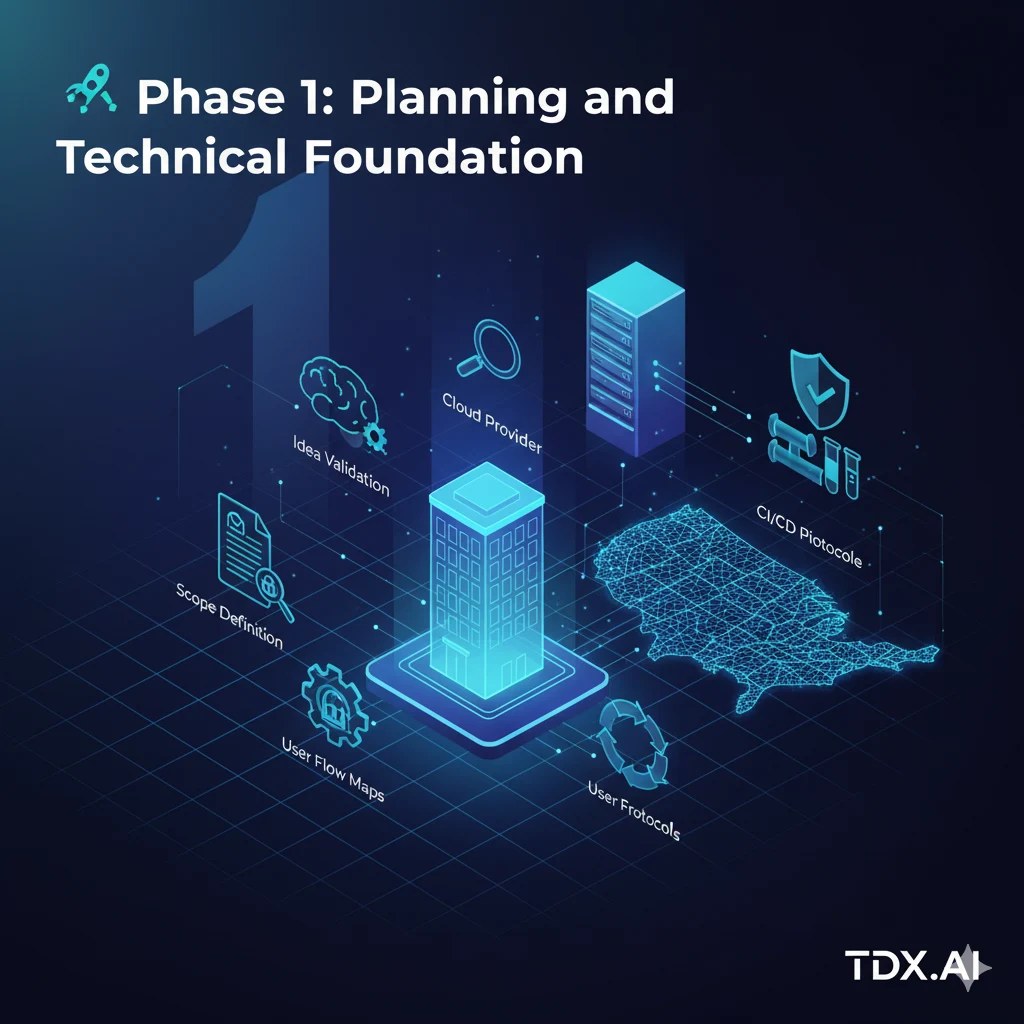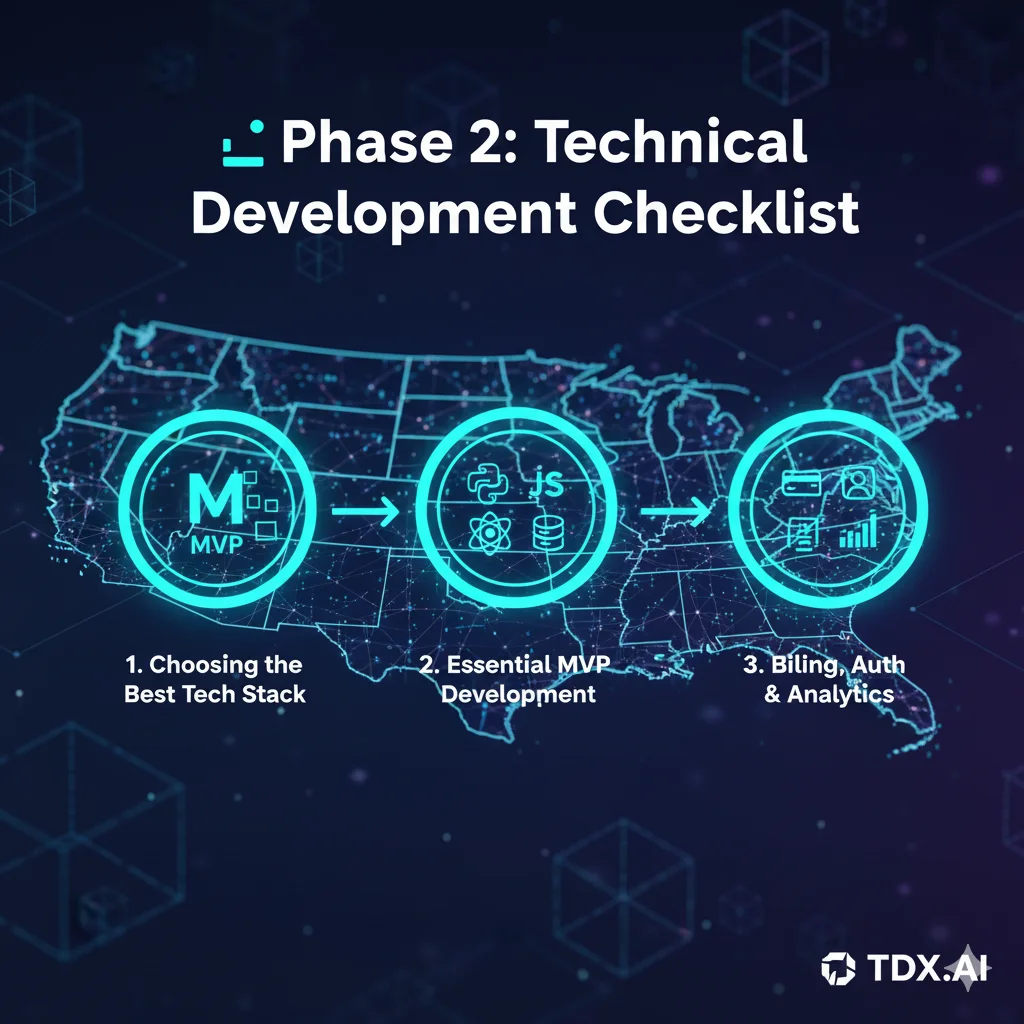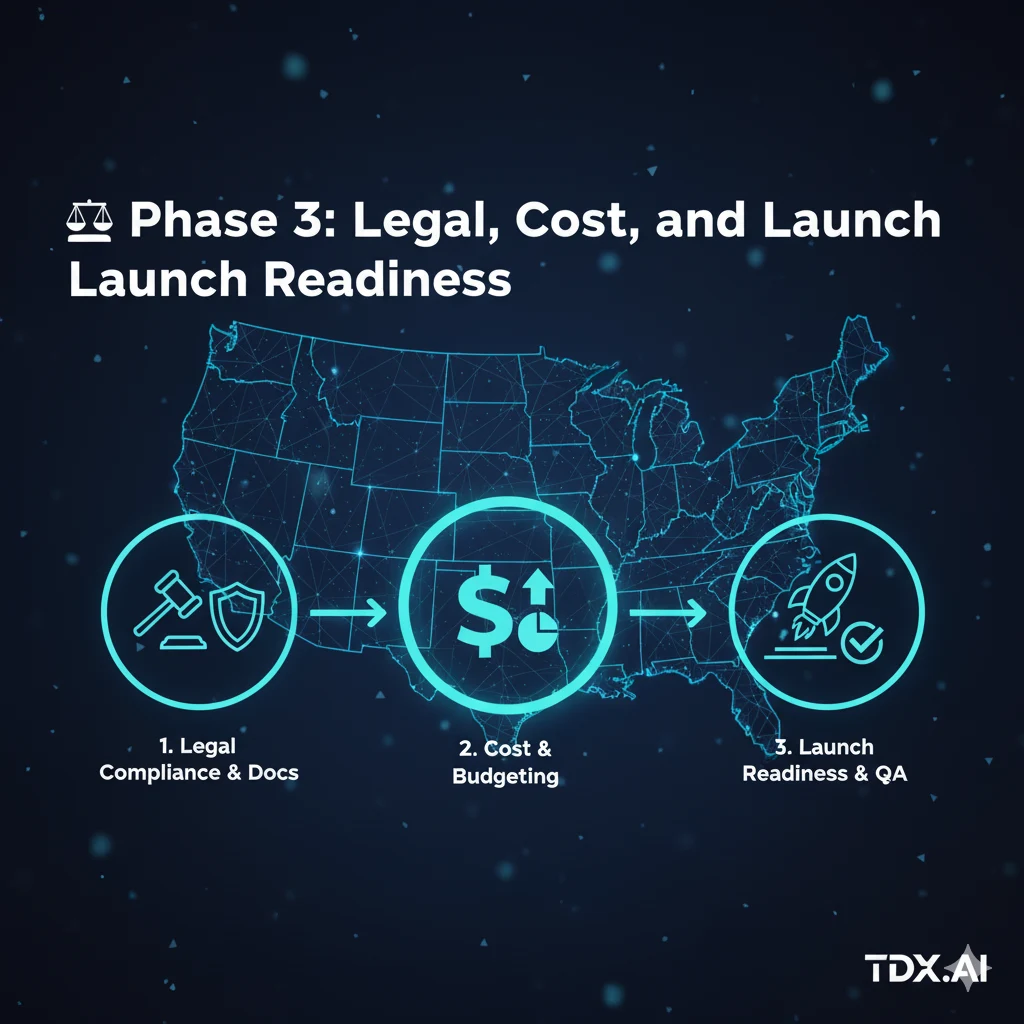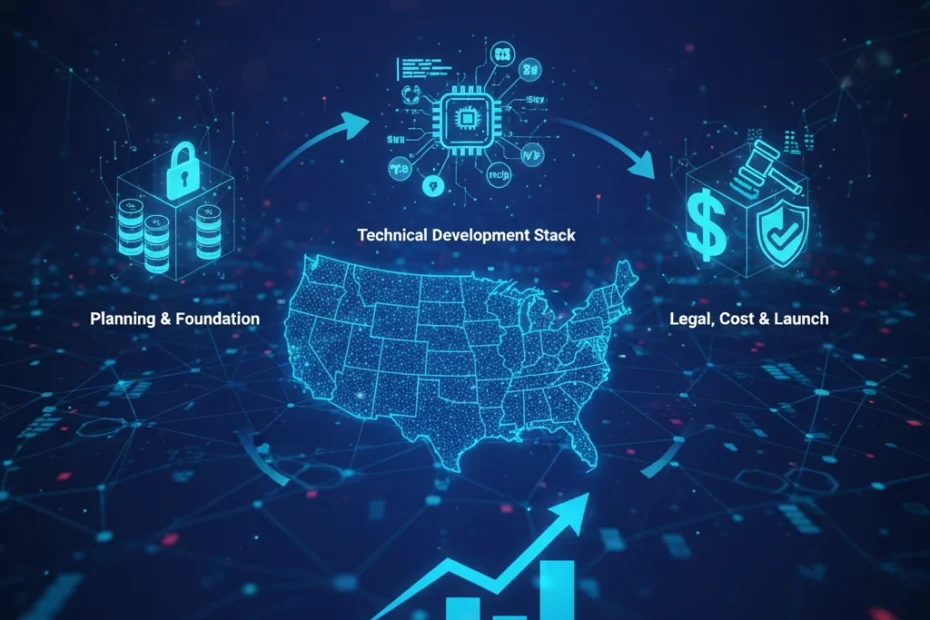Get the definitive SaaS MVP Technical Checklist for US startups. Learn the best tech stack for MVP 2025, critical architecture steps, and realistic estimates for the cost to build SaaS in New York.
Building Your First SaaS MVP in the USA: A Technical Checklist
🚀 Phase 1: Planning and Technical Foundation

This stage defines the what and how of your product, focusing on validation and scalability—the cornerstones of successful SaaS development services.
1. Idea Validation and Scope Definition
The MVP must focus on solving one core problem for a specific user segment. Overbuilding is the fastest way to drain your budget.
- Define Core Value Proposition: Articulate the single, most important problem your SaaS solves.
- Identify Minimum Viable Features (MVFs): List only the features absolutely essential for solving the core problem and generating initial user feedback. Exclude “nice-to-haves.”
- Create User Flow Maps: Document the shortest, clearest path a user takes to achieve the core goal (e.g., Sign Up $\rightarrow$ Complete Primary Task $\rightarrow$ Get Value).
2. Architecture and Infrastructure Setup
Scalability is crucial for a US launch, as rapid growth is the goal. Your foundation must support a multi-tenant environment.
- Choose Cloud Provider: Select a US-based provider (e.g., AWS, Google Cloud, or Azure) for proximity, speed, and data residency compliance.
- Define Multi-Tenant Strategy: Architect your system to securely serve multiple customers from a single codebase and infrastructure to reduce cost to build SaaS in New York and other high-cost regions.
- Implement Security Protocols: Ensure HTTPS/SSL for all traffic, strong password hashing (e.g., Argon2 or bcrypt), and secure environment variable management.
- Set Up CI/CD Pipeline: Establish a Continuous Integration/Continuous Deployment pipeline (e.g., with GitHub Actions or GitLab CI) for automated testing and deployment.
💻 Phase 2: Technical Development Checklist

This phase is the hands-on build a software MVP stage, where the technical decisions around the best tech stack for MVP 2025 are executed.
3. Choosing the Best Tech Stack for MVP 2025
For rapid development, high performance, and future scalability, modern, popular, and well-supported frameworks are recommended.
- Frontend Framework: Select React or Vue.js for component-based architecture and robust ecosystem.
- Backend Framework: Opt for Node.js (with Express or NestJS) or Python (with Django or Flask). These offer rapid development and strong libraries.
- Database: Start with a reliable, scalable choice like PostgreSQL (popular for most SaaS) or a NoSQL option like MongoDB for highly flexible data structures.
- Version Control: Utilize Git/GitHub for code management and collaboration.
4. Essential MVP Development Tasks
These are the non-negotiable elements for a functional, secure, and ready-to-test SaaS MVP.
| Technical Component | Description |
| User Authentication | Implement Sign-up/Login, Password Reset, and secure session management. Use a service like Auth0 or Clerk to save time. |
| Billing & Payments | Integrate a major US payment gateway like Stripe or Braintree. Must handle subscription logic for the SaaS model. |
| Core Feature Build | Develop the 3-5 MVFs that deliver the core value. Nothing more. |
| Intuitive UI/UX | Design a simple, user-centric interface to minimize the learning curve for early adopters. Ensure mobile responsiveness. |
| Analytics Integration | Connect tools like Google Analytics and Mixpanel (or PostHog) to track key performance indicators (KPIs) like activation, engagement, and churn. |
⚖️ Phase 3: Legal, Cost, and Launch Readiness

Launching in the USA requires specific legal and financial considerations, especially regarding the cost to build SaaS in New York and compliance.
5. Legal and Compliance Must-Haves
US startups must comply with federal and state regulations, which often involve data privacy and contract law.
- Legal Documentation: Draft and publish Terms of Service and a Privacy Policy to comply with US data laws (e.g., CCPA for California users).
- Data Security Audits: Conduct a basic security audit on your authentication and database access layers.
- Domain & Trademarks: Secure your domain, relevant social media handles, and conduct a preliminary trademark search in the US.
6. SaaS MVP Cost Breakdown (The US Perspective)
The cost to build SaaS in New York or San Francisco is significantly higher due to local talent rates. Outsourcing or remote US teams can lower these costs.
| Component | Estimated Timeline (Weeks) | Cost Range (Simple MVP) | Notes |
| Discovery & Planning | 2-3 | $5,000 – $15,000 | Market research, wireframing, technical spec. |
| UI/UX Design | 3-4 | $8,000 – $20,000 | Focus on minimum viable design. |
| Frontend/Backend Dev | 8-12 | $40,000 – $80,000 | Core development hours (highly variable). |
| QA & Testing | 2-4 (Concurrent) | $5,000 – $15,000 | Security, function, and performance testing. |
| Infrastructure (3 Months) | Ongoing | $300 – $1,500 | Cloud hosting, domain, basic tools. |
| Total Estimated SaaS MVP Cost | 3-5 Months | $58,300 – $131,500+ | Varies dramatically based on team location (US vs. Outsourced) and complexity. |
Building your SaaS MVP in the USA is a strategic technical exercise. By strictly adhering to this SaaS MVP Technical Checklist, prioritizing core features, selecting a scalable modern tech stack, and accounting for the realistic cost to build SaaS in New York (or elsewhere), you drastically increase your chances of achieving Product-Market Fit with minimal risk and maximum efficiency. Start lean, learn fast, and scale smart.
